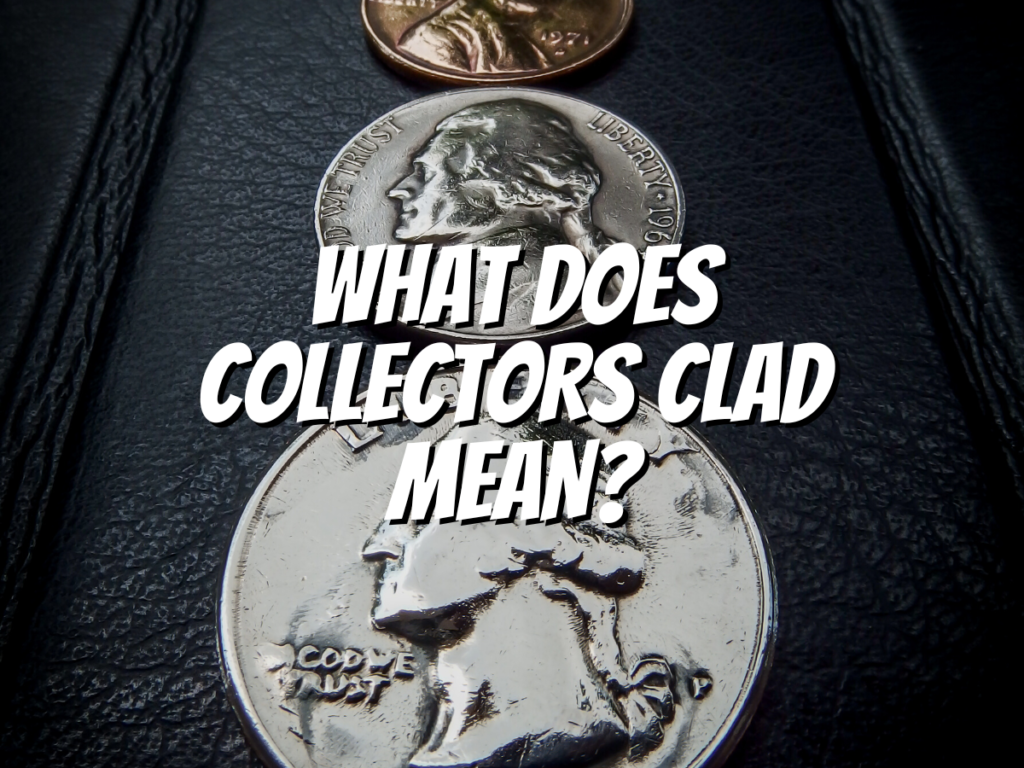What do collectors clad mean in coin collecting? Is there such a thing? Can it be profitable? Let’s dive into this article to know if collecting clad coins can be profitable and worth investing in!
What Do Collectors Clad Mean?

Clad coins aren’t solely produced for utilization in commercial circulation. It’s worth noting that numerous mints across the globe produce unique collector editions of regular coins.
Every year, the United States Mint produces a proof set of circulating coins featuring mirrored fields and frosted devices.
Between 2005 and 2010, satin-finished coins were produced by The United States Mint to be included in the Uncirculated Mint Sets.
In 2014, they made a special anniversary Kennedy half-dollar coin set that featured a high-relief rendition of this classic coin. In 2017, they issued the 225th Anniversary Enhanced Uncirculated Coin Set.
This set features coins with special surface enhancements that accentuate the design details. In addition, the commemorative coin series have included clad coins.
Folks, when it comes to United States commemorative coins, the half dollar coin is typically made of clad and can be purchased at a great value for those of you who collect coins on the regular.
On the other hand, the dollar is typically crafted from silver and sold at a higher price than its clad half-dollar sibling.
Well, you see, back in the day, those silver commemorative coins were crafted from an alloy consisting of 90% silver and 10% copper.
In 2019, they changed the mint to a 99.9% pure silver coin. It was more cost-effective for us to acquire 99.9% pure silver instead of placing a special order for a 90% silver alloy.
History of Clad Coins

Coins with multiple metal layers are called “clad” coins. Modern U.S.-clad coins have a copper core surrounded by a nickel-copper alloy that has been plated to make it look like silver.
The United States Quarter and Half Dollar are both clad coins. All “golden dollar” coins are made of clad metal, including the Sacagawea Dollar and the Presidential Dollars.
They are composed of pure copper inside, with clad layers of zinc, manganese, and nickel.
Are Clad Coins Valuable?
There’s no one simple answer to this question. The value of a clad coin depends on the market and other factors like the type of coin and its condition.
It is also helpful to know that rare coins can be valuable, but not all rare coins are valuable. Some of the most commonly collected coins are only worth a little money.
These include most nickels and dimes from before 1964—but there are exceptions! Suppose you’re interested in buying or selling clad coins online.
In that case, it’s best to research what you’re getting into before making any purchases or trades with collectors or dealers who specialize in such items (who may charge high prices for them).
Are There Variations of Clad Coins?

Yes, there are variations of clad coins. The most common combination is copper/nickel, introduced in 1965 and still used today on the penny and nickel.
However, you can also find clad coinage with copper/aluminum (introduced in 1982), silver/copper (introduced in 1992), and even gold/platinum.
These combinations are often found in sets celebrating a special event or anniversary year and can be worth more than their original counterparts.
Before you go…
I hope you know more about clad coins and how to spot them. If you found this helpful article, please share it with your friends! And don’t forget to leave some topics you think we need to cover in the comment section!
Check out my next article: “How to Tell if a Coin is Silver or Clad?“
Related Articles:

